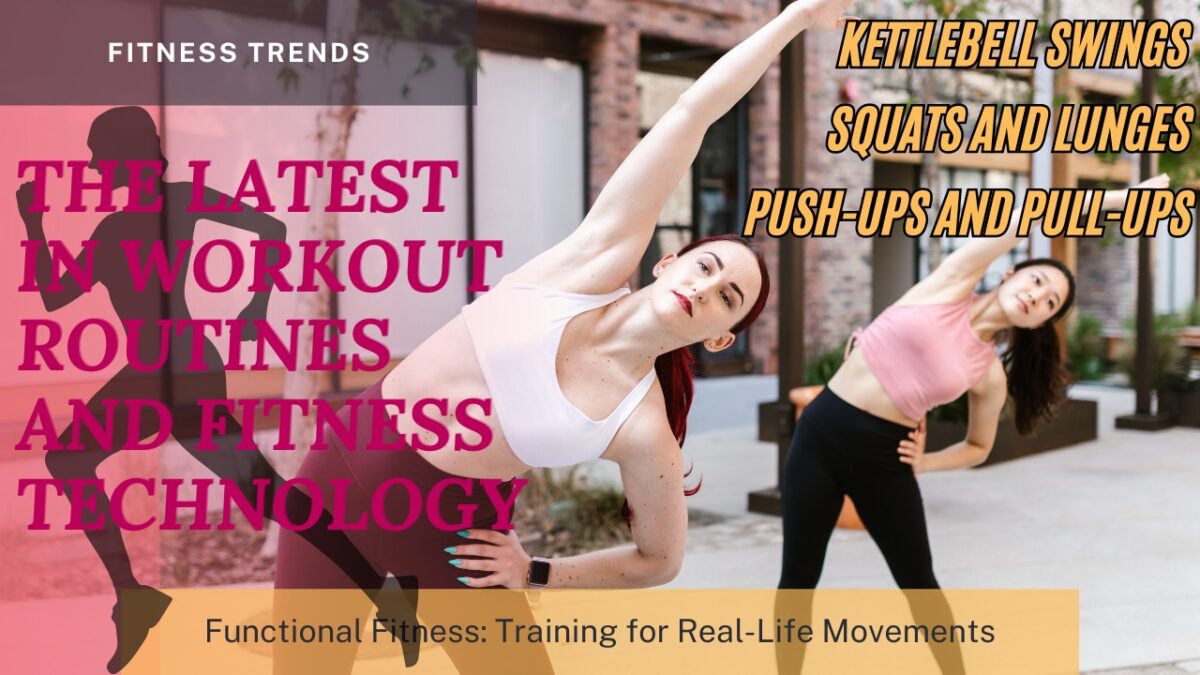In recent years, the fitness industry has undergone a remarkable transformation, driven by innovative workout routines and cutting-edge technology. From wearable devices that track your every move to virtual reality workouts that transport you to another world, staying fit has never been more exciting or accessible. This article explores the latest trends in fitness routines and technology, helping you stay ahead in your fitness journey.
1. High-Intensity Interval Training (HIIT): The Workout That Delivers Results
What is HIIT?
High-Intensity Interval Training (HIIT) involves short bursts of intense exercise followed by brief periods of rest or low-intensity recovery. This approach maximizes calorie burn and enhances cardiovascular fitness in a shorter time than traditional workouts.
Why It’s Popular:
HIIT is highly effective for burning fat, improving endurance, and building muscle. It’s also time-efficient, making it perfect for busy individuals. Whether through bodyweight exercises or combining cardio with strength training, HIIT sessions can be customized to suit any fitness level.
Example Routine:
A typical HIIT workout might include 30 seconds of sprinting followed by 30 seconds of walking, repeated for 20 minutes. Other exercises like burpees, mountain climbers, and kettlebell swings can be incorporated for variety.
2. Wearable Fitness Technology: Tracking Your Progress in Real-Time
The Rise of Wearables:
Wearable fitness technology, such as smartwatches and fitness trackers, has become a staple for fitness enthusiasts. These devices monitor heart rate, steps, sleep patterns, and even stress levels, providing users with detailed insights into their health and fitness.
Features to Look For:
- Heart Rate Monitoring: Helps you stay within your target heart rate zone during workouts.
- GPS Tracking: Ideal for runners and cyclists to track routes and distances.
- Sleep Tracking: Analyzes sleep quality, helping you optimize rest for better performance.
- Fitness Apps Integration: Syncs with apps like Strava, MyFitnessPal, and Apple Health for comprehensive health management.
Benefits:
Wearables not only motivate users to move more but also provide personalized feedback, helping you adjust your workouts for better results. The data collected can be shared with trainers or health professionals for more tailored advice.
3. Virtual Reality (VR) Fitness: Immersive Workouts
What is VR Fitness?
Virtual Reality (VR) fitness combines exercise with immersive, 3D environments. Using VR headsets, users can participate in activities like boxing, dancing, or even exploring virtual landscapes, all while getting a full-body workout.
Why It’s Gaining Popularity:
VR fitness makes exercising fun and engaging. It’s an excellent way to break the monotony of traditional workouts, and it appeals to people who might not enjoy conventional exercise. Games like Beat Saber and Supernatural are leading the charge, offering intense workouts disguised as entertainment.
Potential Benefits:
- Engagement: Keeps you motivated by turning workouts into a game.
- Variety: Offers a wide range of activities, from sports simulations to rhythm games.
- Accessibility: Suitable for all fitness levels, with options to adjust difficulty.
4. Functional Fitness: Training for Real-Life Movements
Understanding Functional Fitness:
Functional fitness focuses on exercises that mimic everyday movements, helping you build strength and stability for daily activities. It involves training multiple muscle groups simultaneously, improving coordination, balance, and flexibility.
Popular Exercises:
- Kettlebell Swings: Enhances hip and core strength, improving posture and preventing back pain.
- Squats and Lunges: Mimic sitting and standing movements, essential for leg strength and mobility.
- Push-Ups and Pull-Ups: Build upper body strength, crucial for tasks like lifting and carrying.
Why It’s Essential:
Functional fitness is particularly beneficial for older adults, as it helps maintain independence and reduces the risk of injury. However, it’s equally important for athletes and anyone looking to enhance their overall physical performance.
5. Connected Fitness Equipment: The Future of Home Workouts
Smart Home Gyms:
Connected fitness equipment, like Peloton bikes and Mirror, brings the gym experience to your living room. These devices offer live and on-demand classes, real-time performance tracking, and the ability to compete with others, creating an immersive workout environment.
Benefits of Connected Equipment:
- Convenience: Work out anytime, without leaving home.
- Personalization: Classes and workouts tailored to your fitness level and goals.
- Community: Join virtual classes and compete with others for added motivation.
Emerging Trends:
In addition to cycling and running machines, connected fitness now includes smart strength training equipment, such as Tonal and Tempo. These devices offer personalized weight recommendations, form corrections, and progress tracking.
Conclusion: Embracing the Future of Fitness
The latest trends in fitness routines and technology are transforming the way we approach exercise. Whether you’re a tech-savvy individual looking to optimize your workouts or someone seeking more engaging and effective ways to stay fit, there’s a trend that suits your needs.
From the intensity of HIIT to the immersive experience of VChild-Friendly Superfood Recipes and Tips for Encouraging Kids to Eat HealthilyR fitness, these innovations make achieving your fitness goals more attainable and enjoyable. By embracing these trends, you can stay ahead of the curve and make the most of your fitness journey.
Related posts
Subscribe
* You will receive the latest news and updates on your favorite celebrities!

